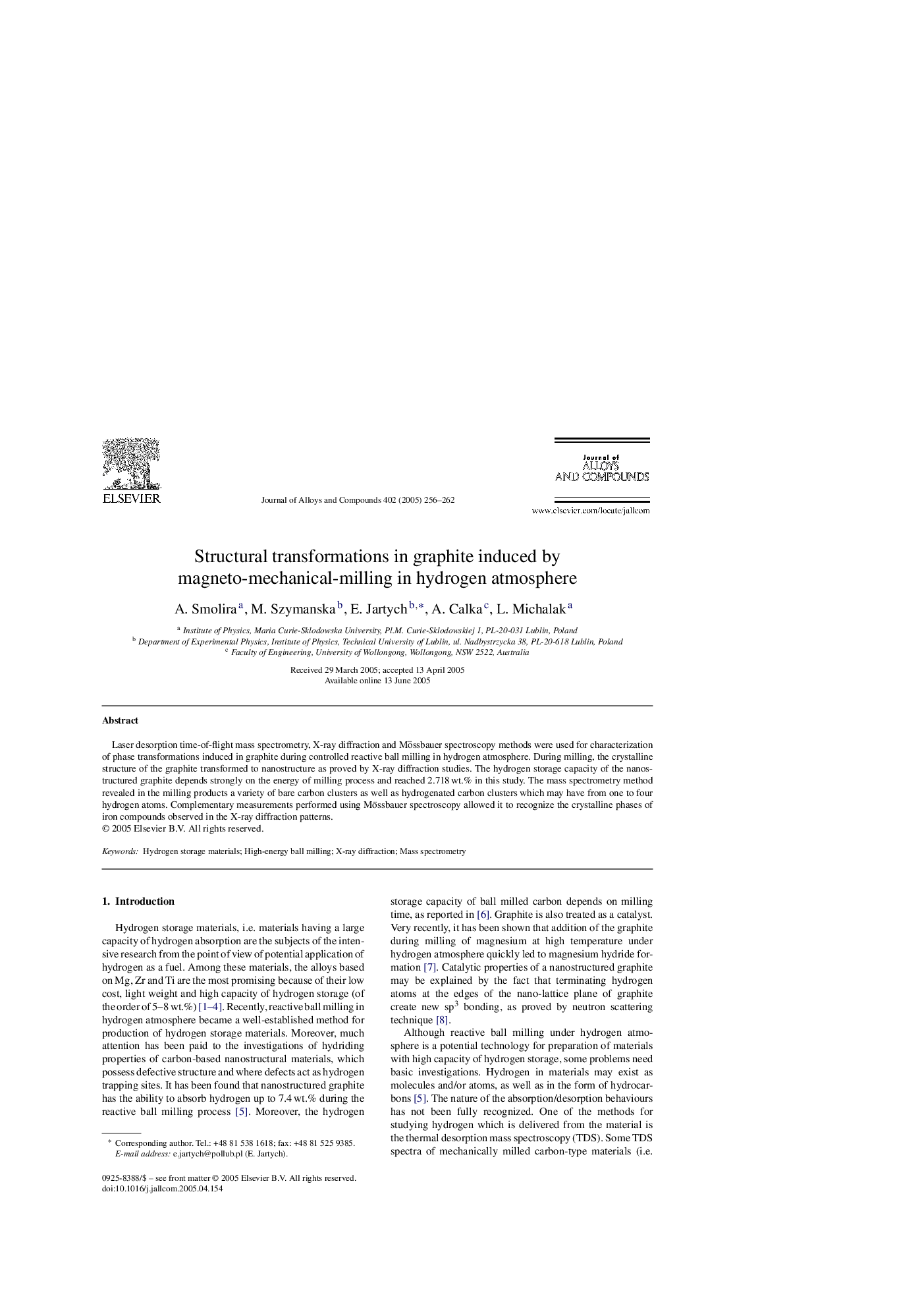| Article ID | Journal | Published Year | Pages | File Type |
|---|---|---|---|---|
| 9803358 | Journal of Alloys and Compounds | 2005 | 7 Pages |
Abstract
Laser desorption time-of-flight mass spectrometry, X-ray diffraction and Mössbauer spectroscopy methods were used for characterization of phase transformations induced in graphite during controlled reactive ball milling in hydrogen atmosphere. During milling, the crystalline structure of the graphite transformed to nanostructure as proved by X-ray diffraction studies. The hydrogen storage capacity of the nanostructured graphite depends strongly on the energy of milling process and reached 2.718Â wt.% in this study. The mass spectrometry method revealed in the milling products a variety of bare carbon clusters as well as hydrogenated carbon clusters which may have from one to four hydrogen atoms. Complementary measurements performed using Mössbauer spectroscopy allowed it to recognize the crystalline phases of iron compounds observed in the X-ray diffraction patterns.
Related Topics
Physical Sciences and Engineering
Materials Science
Metals and Alloys
Authors
A. Smolira, M. Szymanska, E. Jartych, A. Calka, L. Michalak,
